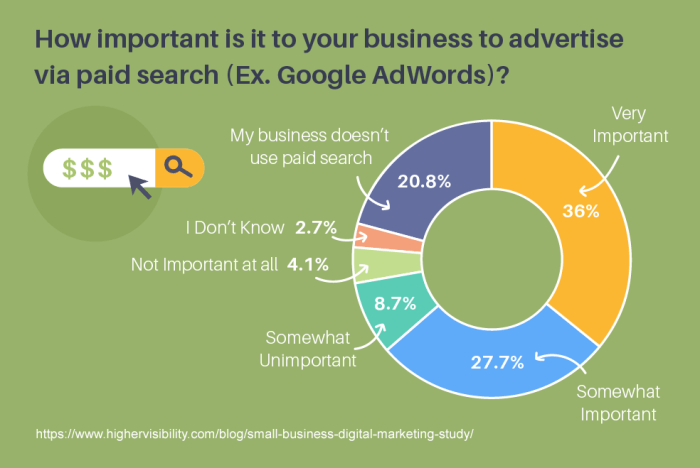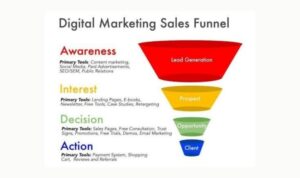Using Google Ads for Local Businesses dives into the world of targeted advertising, helping local businesses boost their brand visibility and drive sales in specific geographic areas. This guide breaks down the benefits, setup process, targeting strategies, and budgeting tips for running successful local ad campaigns.
Benefits of using Google Ads for Local Businesses

Google Ads can be a game-changer for local businesses looking to expand their reach and attract more customers. Here are some key benefits of using Google Ads:
Reach a targeted audience
By utilizing Google Ads, local businesses can target specific demographics, locations, and interests of potential customers. This targeted approach ensures that your ads are being seen by the right people who are more likely to convert into customers.
Increase brand visibility locally
Google Ads can help local businesses increase their brand visibility in the local community. By appearing at the top of search results, your business can stand out from competitors and create a strong brand presence in your area.
Promote products or services in specific geographic locations
One of the biggest advantages of Google Ads for local businesses is the ability to promote products or services in specific geographic locations. Whether you want to target customers in a particular neighborhood or city, Google Ads allows you to tailor your ads to reach the right audience in the right place.
Setting up Google Ads for Local Businesses: Using Google Ads For Local Businesses
Setting up Google Ads for a local business involves a few key steps to ensure your ads are optimized for targeting specific locations and reaching the right audience within your community.
Creating a Google Ads Account
- Go to the Google Ads website and click on “Start Now” to create an account.
- Enter your email address, business information, and billing details to set up your account.
- Choose the campaign type that aligns with your business goals, such as website traffic or phone calls.
- Create your first ad by writing compelling ad copy and selecting relevant s.
Optimizing Google Ads Settings for Local Targeting
- Use location extensions to display your business address in your ads and make it easy for customers to find you.
- Set up ad scheduling to show your ads during peak hours when local customers are most likely to be searching.
- Utilize ad customizers to include location-specific details in your ads, such as promotions or events in the area.
Setting Up Location Targeting in Google Ads
- Go to the “Settings” tab in your Google Ads account and select “Locations” to set up your targeting preferences.
- Choose the locations where you want your ads to appear, such as specific cities, regions, or radius targeting around your business.
- Consider using advanced location options to target customers based on their physical location or intent to visit a particular area.
Targeting Strategies for Local Businesses
When it comes to targeting strategies for local businesses using Google Ads, there are several options available to help reach the right audience in the right place at the right time. Let’s dive into the different targeting options and best practices for local businesses.
Demographics Targeting
Demographics targeting allows businesses to reach people based on criteria such as age, gender, income, education, and more. This can help local businesses tailor their ads to specific groups within their target market, ensuring that their message resonates with the right audience.
Interests Targeting
Interests targeting focuses on reaching people based on their hobbies, interests, and online behaviors. By understanding what potential customers are interested in, local businesses can create ads that are more relevant and engaging to their target audience.
Behaviors Targeting, Using Google Ads for Local Businesses
Behaviors targeting allows businesses to target people based on their past purchase behavior, device usage, and other online activities. This can help local businesses reach customers who are more likely to convert based on their previous actions, making their ad campaigns more effective.
Combining Location Targeting with Other Methods
One best practice for local businesses is to combine location targeting with other audience targeting methods to create a more effective ad campaign. By layering demographics, interests, and behaviors on top of location targeting, businesses can ensure that their ads are reaching the right people in the right place with the right message.
Budgeting and Bidding for Local Google Ads Campaigns

When it comes to setting a budget for a local Google Ads campaign, it’s important to consider your overall marketing goals and the potential return on investment (ROI). Start by determining how much you are willing to spend on advertising each month and allocate a portion of that budget to Google Ads. Keep in mind that Google Ads works on a pay-per-click (PPC) model, so you only pay when someone clicks on your ad.
Setting a Budget
- Start small and test different budget levels to see what works best for your business.
- Consider using Google’s budget recommendations to get an idea of how much you should be spending based on your goals.
- Monitor your budget regularly and adjust as needed to maximize results.
Bidding Strategies
- Use automated bidding strategies provided by Google to optimize your bids based on your goals.
- Consider using bid adjustments for location targeting to focus on specific areas where your business is located.
- Monitor your bids and adjust them based on performance data to ensure you are getting the most out of your budget.
Monitoring and Adjusting Bids
- Regularly review your campaign performance to see which s and ads are driving the most conversions.
- Adjust your bids for high-performing s to ensure you are maximizing your ROI.
- Stay informed about changes in the market and adjust your bids accordingly to stay competitive.



